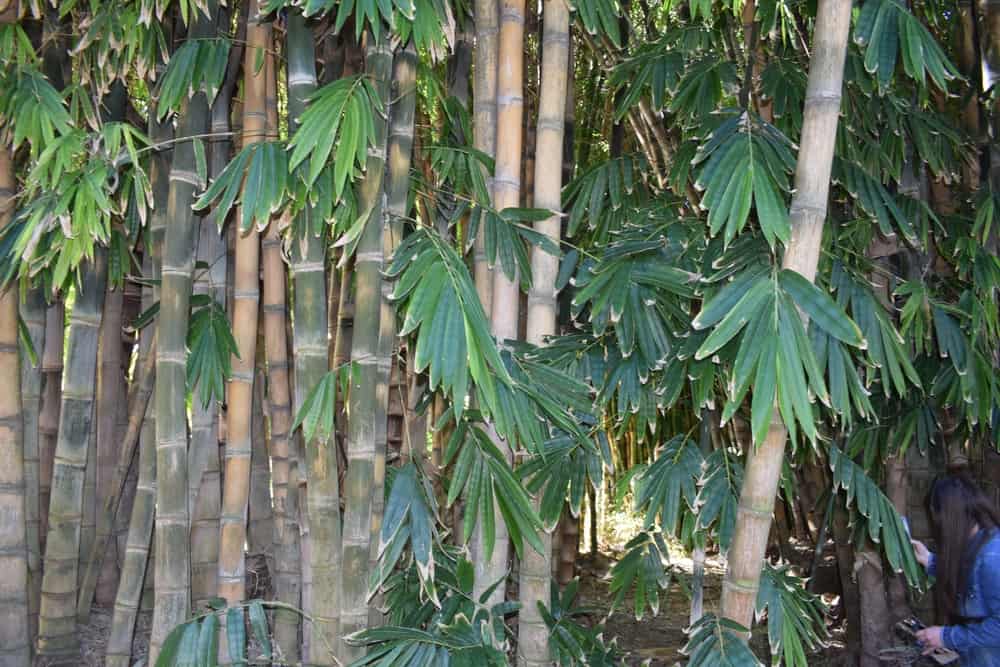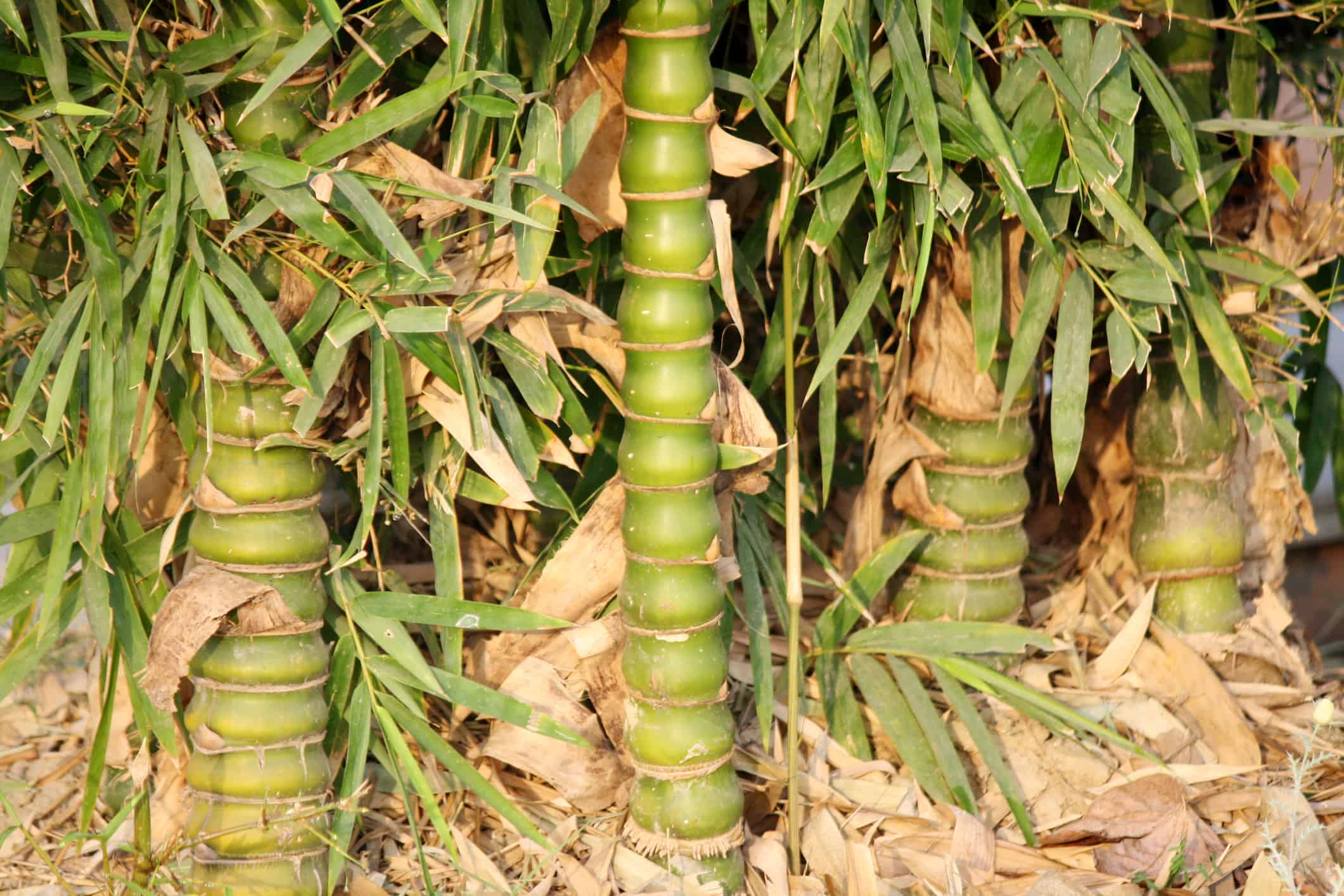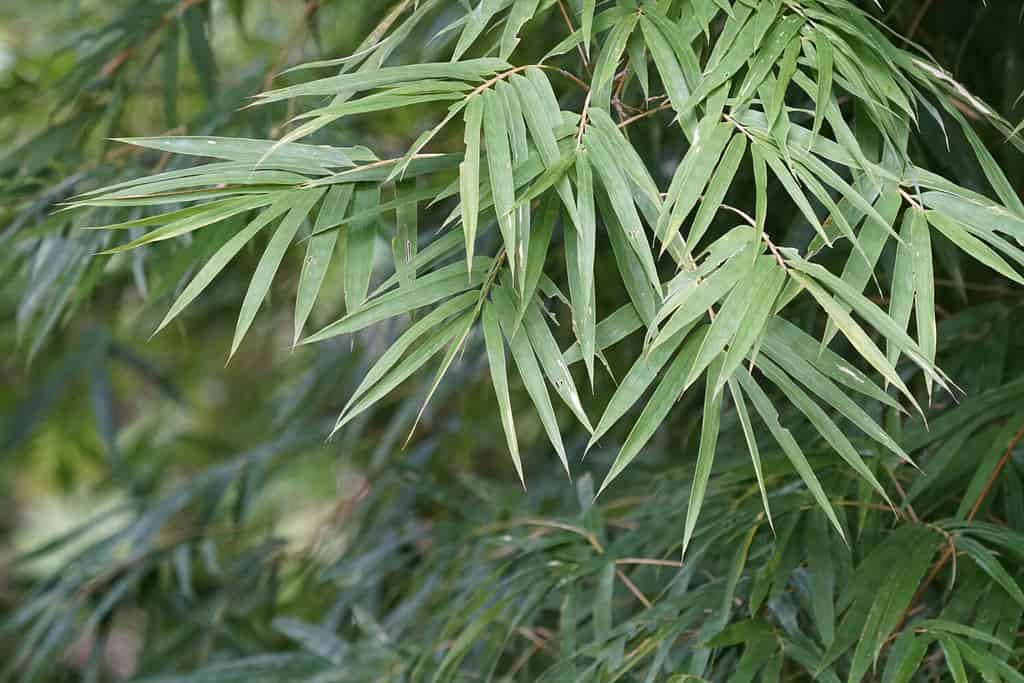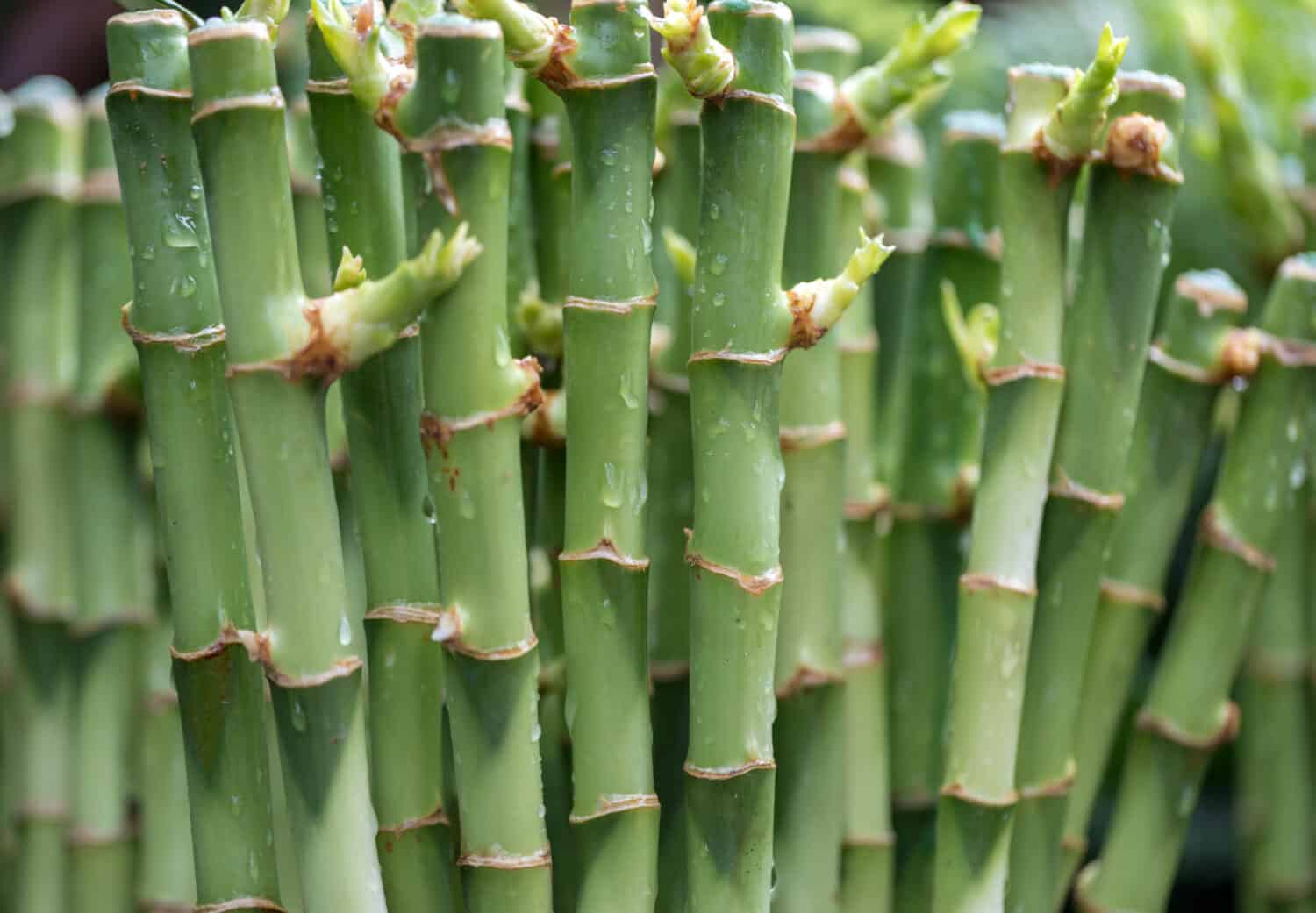Where to Find Bamboo in Hawaii
Although bamboo is not native to Hawaii, unlike states in the continental U.S., bamboo has grown in Hawaii for a very long time. History suggests that bamboo was brought to Hawaii by Polynesians who used bamboo for many practical applications. Even though bamboo is not native to Hawaii, the islands’ tropical climate does provide a good environment in which many different bamboo species may thrive.
Across the Hawaiian islands, many gardeners and landscapers use bamboo for a variety of landscaping purposes. People have grown bamboo in Hawaii for many years. Throughout history and into modern times, Hawaiians have used bamboo as a material for construction, making tools, creating art, and crafting musical instruments. The versatility and rapid growth rate of bamboo have also made it a very popular plant for use as a privacy screen, windbreak, and garden feature.
This article covers the important details to know about growing bamboo in Hawaii. To help you discover whether you should try cultivating bamboo yourself, this article will review some challenges and potential downsides of growing bamboo. From there, you will learn about the benefits of bamboo and how to tackle growing your bamboo grove. Lastly, this article covers places where you can see bamboo growing across the Hawaiian islands so that you can gain inspiration and access practical tips. Let’s get started by discussing the basic facts about bamboo plants and some specific tips for growing bamboo in Hawaii.

Across the Hawaiian islands, many gardeners and landscapers use bamboo for a variety of landscaping purposes.
©Furiarossa/Shutterstock.com
What is Bamboo?
Did that there are more than 1,000 plants called “bamboo”? Many of these species belong to the grass family Poaceae. In general bamboo plants are characterized by their thin, tall stalks, lush leaves, resiliency, and rapid growth rates. However, bamboo species can vary immensely in how quickly they grow, the size they reach, and the uses they are most suitable for. In Hawaii, the most common types of bamboo vary from island to island. In general, however, some of the most common bamboo species include those in the Bambusa genus, the Dendrocalamus genus, the Schizostachyum genus, and the Phyllostachys genus.
Since they grow so quickly, before planting bamboo, you should know about two big categories of bamboo. Some species grow in clumps and are called “clumping bamboo.” Other species are called “running bamboos” because they send “running” rhizomes that spread the plant underground. When people plant running bamboo species in the ground without the limits of a container or pot, the bamboo can spread quickly and become like a weed – very difficult to remove from unwanted areas. This is especially dangerous when running bamboo grows in a non-native environment. There, the plants are considered invasive and can threaten to crowd out native plant life. This is one reason why some experts recommend that home gardeners only plant clumping bamboo, which is easier to contain.
Since Hawaii is already home to a great diversity of bamboo plants, including those in the Bambusa, Dendrocalamus, Schizostachyum, and Phyllostachys genera, you have a broad range of species to choose from when considering which type of bamboo to plant. Across these genera, there are bamboo species that grow in many sizes, shapes, and colors. They also have different uses.

People on the Hawaiian islands have used bamboo for practical, culinary, and cultural traditions.
©iStock.com/Sanjiv Shukla
Uses for Bamboo
Throughout Hawaii’s history, people on the Hawaiian islands have used bamboo for practical, culinary, and cultural traditions. Some of these continue to this day! For example, people used bamboo as a construction material in building homes, to make fishing rods and traps, and to weave baskets and mats. People also made bamboo into tools such as chopsticks or used as the handle for knives or made into agricultural implements such as hoes. However, in addition to these practical uses, bamboo has also had a significant role in Hawaiian culture and music. Bamboo plants have hollow stems, which form a good base for instruments such as flutes and drums. These plants can help make rattles or other instruments which are used in traditional Hawaiian Hula performances.
This is not even a complete list! The uses for bamboo listed above are just a few examples of the many ways that people have used bamboo in Hawaiian throughout history. Bamboo is a vital resource that has had an important role in Hawaiian life for a long time.
Challenges of Growing Bamboo in Hawaii
Although bamboo easily thrives in Hawaii’s tropical climate, there are some challenges you should be aware of before you plant bamboo on a Hawaiian island. Some of these challenges include its status as an invasive species, the soil conditions, storms and weather conditions, potential pests and diseases, and legal restrictions.

Although bamboo easily thrives in Hawaii’s tropical climate, there are some challenges you should be aware of before you plant.
©Romulo Gomes Queiroz/Shutterstock.com
Challenges
First, though bamboo grows easily in Hawaii, it is not native to the islands. As a result, it can spread rapidly and threaten the balance of local ecosystems. To prevent the bamboo from damaging the environment and impacting the native plant, animal, and insect life, you should choose non-invasive bamboo species and proactively contain any bamboo plants to prevent them from spreading out of control.
Second, the ideal growing environment for bamboo involves moist, well-draining soil with rich organic matter. Across the Hawaiian islands, the soil can vary in its composition. You can help your bamboo plants thrive by testing your soil before you plant. From there, fertilize and adjust your soil as needed according to expert advice.
Third, the Hawaiian islands often have storms with high winds. This weather can be particularly damaging if you plant your bamboo in coastal regions near the ocean, where there are strong winds and heavy rainstorms. This weather can cause slender bamboo stalks to bend and break. Avoid having the weather harm your bamboo by planting your grove in an area protected from fierce winds, such as beside a wall or home. However, when planted carefully, bamboo groves can also protect your garden or lawn from the effects of strong winds.
Fourth, bamboo plants can be susceptible to pests, including mites, aphids, and scale. In Hawaii, pests like aphids and beetles can also threaten the bamboo leaves and the overall health of the plants if left unchecked. You should monitor your bamboo plants, implement pest management strategies if needed, and maintain pruning and other management practices to ensure your plants do not become damaged by insects or diseases.
Local Rules and Regulations
In addition to these considerations, Hawaii, as in other cities and states, sometimes places restrictions on plant cultivation. This is because some species are invasive. The government of Hawaii attempts to protect the local ecosystem by restricting plant imports and cultivation. Before planting your bamboo grove, be sure to investigate your local laws and any potential regulations that could limit the types of bamboo you can grow in the area.
By staying aware of the potential challenges and responding appropriately, you can successfully grow bamboo in Hawaii and avoid negative consequences for you or your surrounding environment.
How to Grow Bamboo in Hawaii
After reviewing these challenges, if you remain undeterred, here are some tips to help you grow bamboo successfully in Hawaii.

A bamboo species that will grow well in Hawaii’s climate and environmental conditions.
©Doikanoy/Shutterstock.com
First, choose a bamboo species that will grow well in Hawaii’s climate and environmental conditions. You may consider factors like the soil, climate in your area, the place you intend to plant your grove, and your desired appearance for the bamboo.
After that, plant your chosen bamboo species somewhere with fertile, well-draining soil. Make sure your bamboo has access to the abundant sun. It is also important to make sure your bamboo gets enough water! Although bamboo is fairly resilient and can be drought-tolerant after becoming established, the plants thrive with water. One way you can encourage good soil retention is by mulching the area around the plants.
After your bamboo becomes established, be sure to regularly prune and thin your bamboo to remove dead or damaged stalks (called “culms”). This will promote healthy growth and give you the chance to check the plants for pests or diseases. Maintaining your bamboo should also involve containing its spread and putting in place physical barriers where necessary to prevent it from growing outside of your intended area.
Benefits of Growing Bamboo in Hawaii
While it is good to remember the challenges of growing bamboo, there are also plenty of benefits it offers for you and your local environment. Bamboo plants are beautiful, fast-growing, versatile, and offer many practical benefits.
A bamboo grove can form a natural privacy screen. It can offer shade from the sub. It can also protect you and your garden from the wind. Bamboo groves offer peace by dampening the noise from busy streets. They can also provide double benefits by offering a good habitat for birds and other creatures!
Bamboo can also bring positive environmental impact by helping reduce erosion, stabilizing soil, and filtering out pollutants from the air.
Since these plants have aesthetic appeal and require minimal care and maintenance, many people enjoy using bamboo plants to create a beautiful garden landscape. Because bamboo has a long and rich history in Hawaii, it is an important part of preserving cultural traditions. Whether considering its practical uses, aesthetic appeal, environmental impact, or cultural importance, you can find that planting bamboo in Hawaii offers many wonderful benefits!

Since bamboo has grown for a long time in Hawaii, it is one of only a few states in the U.S. where you can see bamboo plants thriving in the wild.
©Stefan Lambauer/Shutterstock.com
Bamboo Arboretums and Gardens in Hawaii
Before you begin cultivating bamboo in Hawaii, you may want to learn more about how local people grow and care for bamboo plants in your area. This can allow you to get access to expert advice and even help to select the right bamboo species for you. Going to a university agricultural extension can be one way to get this help, as can visiting a local Master Gardener club or plant nursery.
Since bamboo has grown for a long time in Hawaii, it is one of only a few states in the U.S. where you can see bamboo plants thriving in the wild. However, you can also see it grown as part of special exhibits at educational facilities, arboretums, botanical gardens, zoos, and museums. Visiting state parks or a botanical garden is a great way to learn about bamboo while connecting with local experts or passionate plant lovers!
Since these places often exist to teach the public about plants and the environment, you may even find events and special exhibits to teach you all about growing bamboo! To help you connect with these opportunities, the rest of this article covers places where you can visit to see bamboo growing in Hawaii.

The Hawaii Bioreserve and Garden in Papaikou on the Big Island is near Hilo. This stunning garden showcases a wide range of tropical plants.
©iStock.com/paulacobleigh
Botanical Gardens and Arboretums
Hawaii has several botanical gardens, state parks, and arboretums that have bamboo on display.
Foster Botanical Garden
Foster Botanical Garden in Honolulu on the island of O’ahu is a city garden that is also one of the It has a vast collection of plants, including trees planted as far back as 1850! The 14-acre botanical garden has a large collection of tropical plants and garden areas which include a conservatory, butterfly garden, palm garden, and more.
In particular, the bamboo garden allows you to see multiple types of bamboo.
Ho’omaluhia Botanical Garden
The Ho’omaluhia Botanical Garden is in Kāneʻohe on the island of O’ahu. This 400-acre garden was originally built to provide flood protection for Kāneʻohe. Today, it has plants from across the world’s tropical regions, including from countries such as India, Malaysia, Sri Lanka, the Philippines, and more. This garden also offers regular classes and activities on topics such as nature journaling, garden meditation, lauhala weaving, and more.
Wahiawā Botanical Garden
Between the Wai‘anae and Ko‘olau mountain ranges in central O‘ahu is the Wahiawā Botanical Garden. This 27-acre garden was used as an experimental arboretum starting back in the 1930s. Today it is a beautiful assortment of native Hawaiian plants, tree ferns, and more. Among its grounds is a beautiful grove of bamboo plants!
Amy B.H. Greenwell Ethnobotanical Garden
The Amy B.H. Greenwell Ethnobotanical Garden on the Big Island of Hawaii is a non-profit garden dedicated to remembering and celebrating the culture and traditions of the Hawaiian people. The mission “supports Hawaiian cultural traditions of land use and plants, and conserves the plant resources of traditional Hawaiian cultural activities.” Though the focus of this garden is primarily on native Hawaiian plants, there are areas within the garden that showcase introduced species. These include bamboo!
Hawaii Tropical Bioreserve and Garden
The Hawaii Bioreserve and Garden in Papaikou on the Big Island is near Hilo. This stunning garden showcases a wide range of tropical plants. This “living classroom” brings together gardeners, botanists, scientists, and nature lovers from across the globe to enjoy and learn about over 2,000 species. The 20-acre valley has nature trails traveling through a tropical rainforest, over bubbling streams, by beautiful waterfalls, and edged by ocean vistas of the rugged Pacific coast. This magical place is somewhere you can discover all kinds of tropical plants, including bamboo!
Other Places to Find Bamboo in Hawaii
Hawaii has numerous places where you can see bamboo growing and thriving. In addition to those included above, connecting with gardening groups, horticultural societies, and estate associations can be great ways to learn about special events and places to see tropical plants. These kinds of associations may host events at private estates, giving you the chance to see grounds that would normally be closed to the public.
Additionally, because bamboo has become established and “naturalized” in parts of Hawaii, you may sometimes find these plants growing in a “wild” environment. These places could include the side of highways or roads, near riverbanks and waterways, and near agricultural areas where it was planted for agricultural use before spreading into other areas.
However, when exploring Hawaii’s landscape, keep in mind that it is important to respect private property, natural areas, and cultural traditions. Seek permission and obtain any necessary permits before accessing or exploring private lands or protected areas. Additionally, some parts of Hawaii are off-limits to both locals and visitors to protect the land from environmental damage. It is important to remain respectful of these regulations as well as restrictions related to the planting or removal of bamboo and other plants in these areas.
Thank you for reading! Have some feedback for us? Contact the AZ Animals editorial team.








